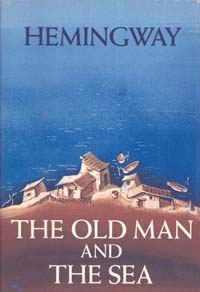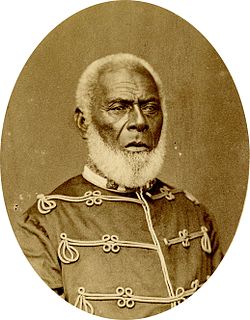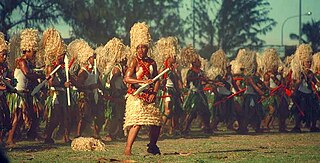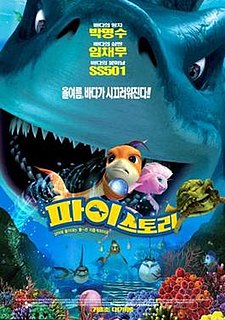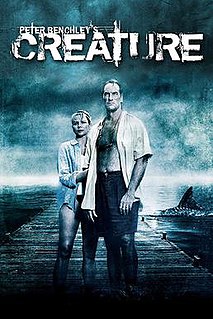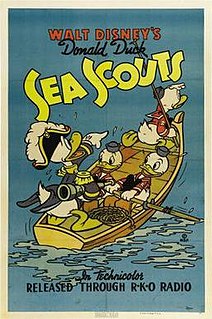This article has multiple issues. Please help improve it or discuss these issues on the talk page . (Learn how and when to remove these template messages)
|
Seketoʻa was a fish god from Niuatoputapu and Tafahi in Tongan mythology.

Niuatoputapu is a high island in the island nation of Tonga, Pacific Ocean, its highest point being at 157 m. Its name means sacred island. Older European names for the island are Traitors island or Keppel island.

Tafahi is a small island in the north of the Tonga archipelago, in fact closer to Savaiʻi (Samoa) than the main islands of Tonga. It is only 9 km (5.6 mi) north-northeast away from Niuatoputapu, and fishermen commute in small outboard motorboats almost daily between the two.

Tonga, officially the Kingdom of Tonga, is a Polynesian country and archipelago comprising 169 islands, of which 36 are inhabited. The total surface area is about 750 square kilometres (290 sq mi) scattered over 700,000 square kilometres (270,000 sq mi) of the southern Pacific Ocean. The sovereign state has a population of 100,651 people, of whom 70% reside on the main island of Tongatapu.
Originally Seketoʻa was a mortal, the grandson of Puakatefisi, the first of the traditional line of rulers of Niuatoputapu island, the Māʻatu dynasty. Puakatefisi had a son by a concubine of his, named Falefehi. That son had two sons, the oldest with the name Moimoi, and the younger was called Seketoʻa. As common in Polynesia, the older son could command the younger in executing the orders of their father. Still Seketoʻa was more beloved by his father than Moimoi. Or so the latter believed, and he planned to kill his younger brother.
Moimoi ordered Seketoʻa to come to his house. The latter obeyed, and sat down outside the former's house, crosslegged with his head bowed and his hands clasped in front, awaiting orders as required by custom. Moimoi told him to come in. But Seketoʻa was suspicious and said that any commands could be given to him here. Soon Moimoi became angry, went inside and came out with a pōvai (big cudgel), and threw it at the other. But Seketoʻa jumped up so quickly that it missed him. Then he grabbed the club himself and yelling bakola (Fijian for: die you wrench) he ran with it towards the other. Moimoi resigned and did not defend himself: "Do what you like to me, Seketoʻa, for I am powerless."
Fijian is an Austronesian language of the Malayo-Polynesian family spoken by some 350,000–450,000 ethnic Fijians as a native language. The 2013 Constitution established Fijian as an official language of Fiji, along with English and Hindi, and there is discussion about establishing it as the "national language", though English and Hindi would remain official. Fijian is a VOS language.
Thereupon Seketoʻa threw down the club and said that he would go to drown himself in the sea and become a fish, leaving Moimoi behind to run the errands for Māʻatu. And he, Seketoʻa, would watch the seas of these islands until the end of the world, that no fish would ever kill a person, and Māʻatu would have the right to call him anytime and he then would come in the shape of a fish.
This is still the right of the real chief of Niuatoputapu. He will send out two of his matāpule (official chiefly spokesmen) to throw kava roots in the sea. That will attract two suckerfish, who are the matāpule of Seketoʻa. They will come and then go. Then a small shark comes and goes. And a medium shark comes and goes. And finally a big shark comes. That is Seketoʻa, and Māʻatu will speak to him.

Kava or kava kava or Piper methysticum is a crop of the Pacific Islands. The name kava(-kava) is from Tongan and Marquesan, meaning "bitter"; other names for kava include ʻawa (Hawaiʻi), ʻava (Samoa), yaqona (Fiji), sakau (Pohnpei), and malok or malogu. Kava is consumed throughout the Pacific Ocean cultures of Polynesia, including Hawaii and Vanuatu, and Melanesia and some parts of Micronesia for its sedating effects.

The remoras, sometimes called suckerfish, are a family (Echeneidae) of ray-finned fish in the order Perciformes. They grow to 7–75 cm long. Their distinctive first dorsal fins take the form of a modified oval, sucker-like organ with slat-like structures that open and close to create suction and take a firm hold against the skin of larger marine animals. The disk is made up of stout, flexible membranes that can be raised and lowered to generate suction. By sliding backward, the remora can increase the suction, or it can release itself by swimming forward. Remoras sometimes attach to small boats, and have been observed attaching to divers as well. They swim well on their own, with a sinuous, or curved, motion.
Seketoʻa had an important contribution to the creation of Tafahi.
Seketoʻa is also known away from Niuatoputapu and Tafahi, but less widely and more vague. There he is sometimes named as the father of ʻIlaheva.


